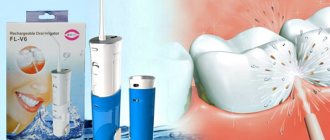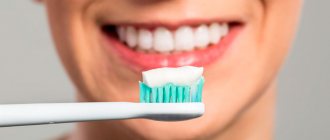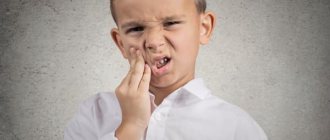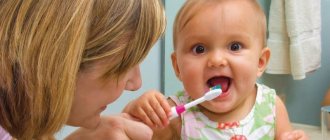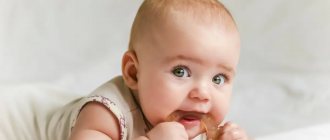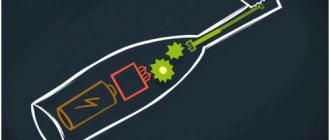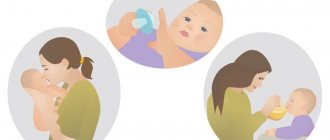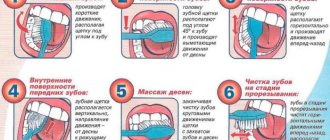Sometimes it can be difficult with children, especially when you need to instill in them certain hygiene skills. It is not easy to teach your child to brush their teeth every day. To make the process easier, try using a dental brushing calendar, which will turn the hygiene procedure into a game and help form a healthy oral care habit for the little ones.
Teeth brushing calendar
How many times a day should you brush your teeth?
When it comes to how many times a day you should brush your teeth, dentists are unanimous. Brushing your mouth twice a day is ideal for optimal dental health. For best results, teeth should be brushed before the first meal and after the last meal. Some people believe that cleaning after every meal is more important, and you can't blame them for being wrong.
In fact, brushing after every meal is recommended for people who are prone to tooth decay or whose mouth is in poor condition. In addition, people who wear braces are also required to brush their teeth after every meal due to the fact that the food they eat tends to get stuck between the braces and the teeth. Brushing your teeth twice a day is a habit that should be instilled from childhood. when a child begins to explore the world.
How to choose the right toothpaste for your child -
To be honest, I have almost no idea how ordinary parents can navigate the abundance of conflicting information about the dangers and benefits of various children’s toothpastes, because up to 99% of all reviews about toothpastes on the Internet are hidden advertising or anti-advertising. In addition, the Internet has long turned into a garbage dump - after all, half of the sites contain absolutely irrelevant information that has not been updated for decades. Here are some examples.
Women's forums and blogs are filled with shocking articles about the dangers of parabens (preservatives) and sodium lauryl sulfate (SLS), about which various horror stories have been written. For example, that parabens are carcinogenic and accumulate in tissues, destroying the lungs and brain, and also that they can disrupt the endocrine system, exhibiting estrogenic activity. Regarding carcinogenicity and organ toxicity, this is generally not true (clinical studies), but as for estrogenic activity, this is a very interesting topic.
The fact is that parabens are a whole group of substances, which includes methylparaben, ethylparaben, propylparaben, isopropylparaben, butylparaben, isobutylparaben, and benzylparaben. So, toothpastes usually use only parabens with small chain sizes (these are methylparaben and ethylparaben). According to authoritative research, short-chain parabens do not have estrogenic activity at all, but long-chain parabens (for example, isobutylparaben) do.
But the most interesting thing is that the estrogenic activity of isobutylparaben is 240,000 times! less than estradiol (this is the most active female sex hormone of the estrogen group). Therefore, it may not have any clinical significance. But why it is really not advisable to include parabens in children’s toothpastes is due to possible irritation of the mucous membrane or the development of allergic reactions on the oral mucosa (according to statistics, this occurs in approximately 4% of children).
The same applies to the harm of sodium lauryl sulfate (SLS), the whole fault of which essentially lies only in accelerating the desquamation (desquamation) of the epithelium of the oral mucosa. Therefore, if a child uses toothpaste with SLS and has predisposing factors to the development of stomatitis or thrush, the frequency of repeated cases of stomatitis, as well as their severity, may be higher (compared to children who use toothpaste without SLS) . You can read about this in an authoritative study at the link (source), but if you don’t know English, use a browser translator.
Overall, I hope you will think about this information and begin to think more critically about information on forums and blogs. And we argue our point of view - not only with the dental education of the author of the article (with more than 20 years of experience), but also always provide links to the most authoritative clinical studies.
Now, more about choosing children's toothpaste -
On our website there is a separate article with a rating of children's toothpastes (for 2021). But in this section we would like to talk about the strategy for choosing toothpaste for children of different ages - from 0 to 2 years, from 2 to 6 years, and from 6 to 12 years. The fact is that there is a lot of outdated information on the Internet, and we want to tell you about the latest recommendations from the most reputable medical organizations. Those. everything we discuss below is recommended by the following organizations:
- "WHO" (World Health Organization),
- "EAPD" (European Academy of Pediatric Dentistry),
- "AAPD" (American Academy of Pediatric Dentistry),
- "AAP" (American Academy of Pediatrics),
- "StAR" (Russian Dental Association), etc.
The main question for parents - with fluoride or without fluoride
Fluoride-containing toothpastes have high anti-caries activity (unlike calcium-containing toothpastes without fluoride), however, excess fluoride intake into the body increases the risk of developing dental fluorosis. Fluoride cannot penetrate the oral mucosa, and its entry into the body during brushing is associated exclusively with involuntary swallowing of toothpaste. The latter is possible in children under 4-6 years of age, because At this age, children have not yet developed a fully controlled swallowing reflex.
But in order for a child to develop dental fluorosis, he needs to swallow almost half a tube of toothpaste every day . But this is impossible, because The recommended amount of toothpaste is much less. And therefore, swallowing fluoride toothpaste can be dangerous - only if you live in a region with a high level of fluoride in drinking water, or if you feed your child nutritional formulas enriched with large amounts of fluoride. If these 2 main factors are absent, then swallowing a small amount of fluoride toothpaste every day will never lead to the development of fluorosis.
→ Regions with high levels of fluoride in drinking water
In short, these regions include some areas of the Moscow region, Kirov, Vladimir, Samara, Ryazan, Tver, Irkutsk, Yaroslavl, Kaluga, Kemerovo regions, as well as Karelia and the Republic of Mordovia (source - see the link above). The ideal fluoride content in tap water is 0.7 mg/l, and exceeding this figure to 1.0-1.2 mg/l already statistically significantly increases the risk of developing fluorosis.
It is also important to consider that water filtration systems operating on the principle of reverse osmosis reduce the fluoride content in water by approximately 84%, and carbon filters by at least 81% (this was proven by research by Brown MD and Aaron G., publication in the journal " Pediatr.Dent" for 1991). Therefore, even if you live in regions with a high level of fluoride in water, your child’s fluoride intake may be within normal limits (the main thing is that you do not forget to regularly change the cartridges for your filter, and also do not give it bottled or spring water).
Table 1 is the recommended total daily fluoride intake for children 0 to 19 years of age. Link to scientific publication (Source - US National Academy of Sciences).
What else is very important. The risk of developing fluorosis only exists in children between 0 and 6 years of age, with the most important period being between 0 and 2 years of age. Excess fluoride consumption after 6 years can no longer lead to the development of fluorosis in permanent teeth. Therefore, regarding the prescription of fluoride toothpaste to a child from 0 to 2 years old, it is better to consult your dentist to be on the safe side.
If your child does not have carious teeth (or there are only isolated cases of caries), in this case you can safely use calcium-containing toothpastes without fluoride , but it is imperative that it contains a high dosage of xylitol/xylitol. Xylitol is a sweetener that also has anti-caries activity, although it is less than fluoride. It is best when fluoride-free paste contains a combination of several calcium compounds at once - this can be calcium lactate, calcium pathotenate, calcium glycerophosphate and hydroxyapatite.
If your child has new carious lesions regularly, then, provided there is no excess consumption of fluoride in drinking water and milk formulas, fluoride toothpaste can be prescribed even from 0 to 2 years. Previously, the concentration of fluoride in toothpastes for children of this age was only 500 ppm, but since 2021, the WHO (World Health Organization), as well as all other organizations listed above, have changed the recommendations to 1000 ppm. The main thing is not to exceed the recommended amount of toothpaste.
Table 2 – recommended concentration of fluoride in toothpaste for children. This is data from a very authoritative organization - the European Academy of Pediatric Dentistry (EAPD). Link to scientific publication (source).
Therefore, it is considered safe for children 0 to 2 years of age to use toothpaste with 1000 ppm fluoride—about the size of a small pea (or a large grain of rice). For children from 2 to 6 years old, the volume of toothpaste with 1000 ppm fluoride should be about the size of a large pea. An important point - if your children's toothpaste contains only 500 ppm of fluoride, then to achieve exactly the same content of fluoride ions - you just need to use 2 times the volume of toothpaste than stated above.
Volume of toothpaste with fluoride 1000 ppm (up to 2 years, and after 2 years) –
Toothpastes if your child has frequent stomatitis -
In early childhood, children experience fairly frequent outbreaks of various forms of stomatitis on the oral mucosa. You can, of course, regularly treat aphthous and herpetic forms of stomatitis. But it is much more effective to use special toothpastes to prevent stomatitis, which increase the protective properties (local immunity) of the oral mucosa - due to the content of lactoperoxidase, lactoferrin, glucose oxidase and lysozyme. These enzymes are part of “SPLAT Junior” and “SPLAT Baby” (Fig. 12-13).
Can a child use mouthwash?
As a general rule, mouthwashes are not recommended for children under 6 years of age. It is at this age that children develop the skill of not swallowing liquids when necessary and spitting them out. It is important to note that mouthwashes are not a substitute for traditional teeth brushing. They in no way help to clean your teeth, but they help strengthen your teeth enamel due to their fluoride content.
How long should you brush your teeth?
It is enough to brush baby teeth for 2 – 3 minutes. This is the norm for both adults and children. If your child can’t stand it for that long, try to turn brushing your teeth into a game, as described above, since simple coaxing is unlikely to help. In order for the child to have only pleasant impressions of the procedure, try doing it, say, to children's songs. Also try to explain how many times a day you should brush your teeth. Try to cultivate in your child the desire to take care of their teeth; in the future, this will undoubtedly have a beneficial effect not only on their beauty, but also on their health.
Consequences of poor oral hygiene in children -
Many parents either take their children's oral hygiene very lightly or consider the current level of hygiene to be good. But in the vast majority of cases this is self-deception. Insufficient hygiene primarily causes the accumulation of soft microbial plaque and tartar, which in turn leads to –
- to the appearance of gingivitis in a child,
- to tooth destruction by caries,
- to the development of pulpitis and acute pain,
- further - to the appearance of fistulas and purulent bumps on the gums in the child, which will require the mandatory removal of the causative milk teeth. We hope that our article: At what age should a child brush his teeth was useful to you!
Sources:
1. The author’s higher professional education in dentistry, 2. Based on 20 years of personal experience as a dentist, 3. The European Academy of Paediatric Dentistry (EU), 4. National Library of Medicine (USA), 5. “Pediatric therapeutic dentistry. National leadership" (Leontyev V.K.).
How to teach a child to brush their teeth
To begin, prepare your child for daily brushing by wiping his teeth and gums with a soft, damp cloth. Remember to wash your hands thoroughly. Use your finger to gently massage your baby's gums. As soon as your child reaches the age of two, buy him a toothbrush for children and start teaching him how to brush properly. In the beginning, the child will not be able to hold the brush properly, and therefore it is important to observe this process and correct it when necessary. You may need to continue helping your child brush his teeth until he is 6 or 7 years old.
It is at this age that children develop the ability to consciously do something. Even if your child insists that he can clean his mouth on his own, it is still best for you to supervise his actions. Many children do not like to do this, and may try to speed up the process by missing many important areas, either on the chewing surface or between the teeth.
Use only a soft toothbrush to avoid damaging your baby's delicate gums. Children who may swallow some of the toothpaste should buy fluoride-free toothpaste. Children get enough fluoride from their drinking water, and swallowing fluoride from toothpaste may actually do more harm than good. Also, fluoride, in excess amounts, can cause teeth to turn black. teeth brushing calendar will help you get used to brushing your teeth.
Why do you need a teeth cleaning calendar? This is a great way to remind your child to brush their teeth in the morning and evening.
Teeth brushing calendar for two children
Let your teeth always be healthy!
We will be happy to post your articles and materials with attribution. Send information by email
If the child does not want
You can overcome your toddler’s reluctance to pay attention to cleaning the mouth using the following simple methods:
- Play.
Pretend to be little yourself. Ask your child to teach you how to clean your mouth properly. Give him the brush and get ready for the lesson. Make the game fun and relaxed. If you want, praise the baby for “science.” The little reluctant one will like this fun game. Soon he will want his mother to brush his teeth, tickle his tongue and gums, and will want to rinse his mouth with clean water on his own.
- Let me taste the pasta.
Children's dental cosmetics without fluoride are safe even if the baby swallows just a little. Offer your little one several options for pastes with different flavors: raspberry, orange, lemon. Give me a lick. The baby's fear of unknown substances will disappear. The next step will be to clean the front incisors with the paste you like. Take your time, don't force the process to speed up.
- Gather the team in the bathroom.
Use series with bunnies and princesses on packages of pastes and brushes.
Say goodbye to them when you leave the bathroom after washing your face. Tell your baby that they really miss their owner and want to play with him.
- Count the teeth.
While brushing, count the teeth already treated with toothpaste. The brush and mom will act as math teachers. Warn your baby that the teeth are very offended if you forgot to count them; you need to devote some time to each of them. Simultaneously with teaching hygiene, the little ones will learn numbers.
- Don't forget about gifts and surprises.
You can also motivate those who don’t want to with promises of reward. But it must be earned. Buy stickers in the shape of stars and hearts and stick them on the poster all week if your baby complies with the request to go to the bathroom in the morning and evening.
After 7 days, count up the rewards and give out the well-deserved prize. Give your child the opportunity to choose a toy or sweets himself. Agree on this in advance, then the desire for independence will increase significantly.
Useful and proven tips for teaching your child to brush their teeth will not help if you are not patient and do not use your imagination. Remember that the best way for preschoolers to learn is through play.
Remember about teeth not only in the bathroom, but also during the day when your daughter puts the doll to bed. Report that Lala (toy) forgot to brush her teeth. Go to the bathroom with your baby and perform the ritual with the toy. And in the evening, remind her that the doll did not cry, but brushed her teeth and went to bed peacefully.
How many times a day should you brush your teeth?
Every adult knows: it is necessary to brush your teeth in the morning, before enjoying breakfast, and in the evening, before going to bed. Twice a day is quite enough - this is the opinion of most dentists.
In some cases, doctors recommend that patients use a toothbrush more often. This is required if:
- there is a tendency to carious lesions;
- gums often become inflamed;
- man wears braces.
In such situations, dentists advise brushing your teeth 3-4 times or after each meal. It is especially important to do this if you have a braces system: pieces of food tend to get under the structural elements, as a result of which the enamel deteriorates and caries develops.
The same rules apply to children. General recommendations: a child should brush their teeth twice a day, but if they have illnesses or have braces installed, then more often.
It is enough for adults to receive information about what measures to take to protect their teeth. For children, you will have to come up with games that transform the cleaning process from a tedious task into an exciting activity.
To ensure that visits to the dentist do not cause unpleasant emotions, but are a regular medical examination without the need to drill out cavities and remove hard plaque, develop a brushing schedule for your child and begin to follow it together.
Children's toothbrushes: how to choose
How to choose a toothbrush for a child: keep in mind that toothbrushes for children are produced a priori only with soft bristles (and this applies to both regular manual toothbrushes and attachments for electric toothbrushes). A children's toothbrush has a smaller head with bristles than an adult toothbrush. Moreover, many manufacturers make the heads of the brushes rubberized to eliminate the possibility of injury to the delicate mucous membrane of the child.
When purchasing, pay attention to the packaging - all toothbrushes for children are marked with information about the recommended age of the child for such a brush. It is also worth choosing brushes that have an attractive design (in this case, the brush will be interesting to the baby, and he will be less afraid of it). Below you can see several examples of good toothbrushes designed for children of different ages (age markings are on the packaging of the brushes).
Important: change your brush every 3 months, but possibly earlier (if the bristles of the toothbrush “fluff” before this time), because Worn bristles are very poor at removing microbial plaque. If you have 2 children, then each of them should have their own toothbrush. Under no circumstances should you brush your child’s teeth with someone else’s toothbrush (including your own), because... in this case, you will infect the child’s oral cavity with your microflora.
Remember that a child is born with a sterile oral cavity, and all cariogenic bacteria are inherited from his parents and relatives. For example, when you lick your baby's spoon to taste his porridge. When you or relatives kiss a child on the lips, etc. Well, as a result, we get dental caries in early childhood.
Electric children's toothbrushes - from about 3 years of age, you can add variety to your child's oral hygiene with the help of an electric toothbrush. Such a brush will be interesting to the child and will make the routine process of brushing teeth much more interesting. Moreover, so that the child is not afraid, you can do everything again in the form of a game, when you brush the child’s teeth, and the child brushes your teeth. But keep in mind that you need to do this with different attachments (otherwise you will infect the child with your cariogenic microflora)!
When buying an electric toothbrush, pay attention to the age markings on it. The fact is that there are different models of children's electric brushes, and they can be recommended for children of different age categories. Examples of Oral-b electric toothbrushes:
How long should you brush your teeth?
The frequency of brushing your teeth usually does not raise questions or doubts. How many minutes does it take for it to be successful?
For the youngest, the first procedures should take a few seconds. The mother puts a special plastic finger guard with a tiny brush on one side on her finger and gently massages the baby's teeth.
Finger guard for babies
When should I start doing this procedure? If your baby is 7 months old and his first teeth have erupted, it’s time to start teaching him to brush.
Later, by about two years, you need to accustom your child to the fact that the duration of brushing will be 2-3 minutes.
During this time, you need to have time to clean the chewing surfaces, pay attention to the inside of the teeth and the interdental spaces. Teach your child to gently massage the gums - this is necessary to improve blood circulation in their tissues.
Do you need to brush your teeth?
Alas, many parents still mistakenly believe that there is no need to care for baby teeth, and all care and care should be directed to the molars. However, such an opinion is fundamentally wrong. It is imperative to brush your baby's teeth.
- Firstly, the enamel of baby teeth is very weak, and caries affects fragile incisors and molars very easily.
- Secondly, mother's breast milk and formula contain a significant amount of sugar, which inevitably affects the baby's teeth.
- Thirdly, teeth affected by caries can become a source of infection in the oral cavity. Dangerous bacteria can spread throughout the body, causing serious diseases in the baby, such as tonsillitis or pyelonephritis and, of course, subsequently “infecting” the molars.
- Fourthly, it is important to form the habit of brushing your baby’s teeth from a very early age.
It is important for moms and dads to understand that visiting dentists at a young age can be very frightening for a child. Neglected caries can very quickly develop into pulpitis, and the baby’s tooth will be removed, which will inevitably affect the chewing process and the formation of the child’s bite.
How to teach a child to brush their teeth
The best option for forming a sustainable habit in a child of brushing his teeth twice a day is play. How to make your task easier and speed up the process? Try the following methods:
- tell your child an interesting fairy tale in which a toothbrush appears, as well as “bad” and “good” microbes and bacteria;
- brush your teeth with him - let him watch your movements and repeat them; help the child in the process - after all, he does not yet know how to handle a brush;
- buy for your son or daughter “delicious” toothpaste and a brush that has stickers or three-dimensional images of his favorite “cartoon” characters;
- download a special calendar, print it and hang it in a visible place, and so that the baby can easily reach it - we’ll tell you why this is needed below.
Toothpastes that are interesting to children
The main thing is that the child must learn that brushing his teeth twice a day is a necessary part of the regime, just like washing his face after getting up and going for a walk after breakfast. Your task is to make your baby want to brush his teeth - this activity should be interesting for him.
Teeth brushing calendar for children
A child of 2 years old does not yet know how to read, but he likes to look at bright pictures and take part in their creation himself - draw, paint.
You need to print any in A4 format or, even better, in A3 format. Children like large, three-dimensional images.
The calendar was invented for those who are not yet familiar with letters. But it will also be interesting for older children, 6–7 years old, since, in addition to pictures, it contains inscriptions and short stories.
It consists of 30 (or 31, depending on the number of days in that month) images of the sun and moon. Every time a child wakes up in the morning and brushes his teeth, he colors one sun. In the evening, before going to bed, the child brushes his teeth and paints over the moon.
This way he will know for sure that not a single ritual has been missed today.
Set aside a place in the bathroom to place your son or daughter’s toothbrush and toothpaste. He should have his own corner in which a beautiful brush and “delicious” paste “live”.
Toothbrush with your favorite characters
To make it easier to consolidate skills, you can involve your favorite stuffed bunny or teddy bear - let them always brush their teeth and paint over pictures on the calendar with your child.
Use Colgate line pastes. This company has developed special children's pastes that:
- not oversaturated with fluorine;
- do not contain harmful substances and are therefore not dangerous if accidentally swallowed;
- have a pleasant taste.
Babies do not yet know how to rinse their mouths and often simply swallow the paste. If they eat some Strawberry or Fruit Flavored Colgate, nothing bad will happen.
Pediatric dentists also recommend ROCS pastes. They are designed taking into account the age characteristics of children: there are Rox pastes for the youngest, from zero to 3 years old, for children from 3 to 7 years old, and for teenagers.
These pastes protect enamel, contain xylitol, which serves to strengthen tooth crowns, as well as probiotics, which support normal oral microflora. Pastes do not cause allergic reactions and do not contain irritating components. Children like the taste of these pastes.
Recommendations from Dr. Zubastik
Teaching a child to brush their teeth twice a day is an important task that only parents can solve. Neither kindergarten nor school can help here. Therefore, watch your child: what is more important for him - to see your personal example? Participate in the process of brushing your teeth together? Show creativity - color pictures on the calendar? Use any method that is interesting and enjoyable for the child. Brushing his teeth should become a mandatory daily ritual for him, associated with pleasant emotions. And then caries or stomatitis will not be scary for your baby!
A short video: teaching kids to brush their teeth:
How to use dental floss?
Dental floss is an indispensable attribute of good oral hygiene. Unfortunately, even adults rarely know how to use it correctly. The main trick is not to try to forcefully insert it into the interdental space (this usually ends in a rather painful injury to the gums). To avoid injury, the thread must be inserted with a “sawing” motion, pressing it against one of the teeth. Having thoroughly cleaned its inner wall, the thread is reinserted into the same gap, pressing it against another tooth.
